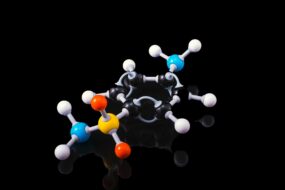- Home
- DRUGS
- Drugs acting on infectious Agents
- Ethambutol (E)
Ethambutol is selectively tuberculostatic. The fast multiplying bacilli are more susceptible to the drug. When added to the triple-drug regimen of RHZ, it hastens the rate of the sputum conversion and prevents the development of resistance.
Indication.
- Tuberculosis in conjunction with other anti-tuberculous drugs.
Mechanism of action.
- Inhibits arabinose transferases involved in arabinogalactan synthesis, interfering with mycolic acid incorporation in the mycobacterial cell wall.
Resistance.
- Mutation of the embB gene reduces the target enzyme’s affinity for Ethambutol.
- No cross-resistance with any other antitubercular drug has been reported.
Contraindications.
- Patients with renal disease.
- Patients with optical neuritis.
- Used with due precaution in children.
Adverse effects.
- Loss of visual acuity due to optical neuritis- dose-related toxicity.
- Nausea, fever, rashes, and rarely peripheral neuritis.
Hyperuricemia
- due to interference with urate excretion in the body.
Dosage.
- MYCOBUTOL, MYAMBUTOL, COMBUTOL 0.2, 0.4, 0.6, 0.8,1.0 g tablets.












